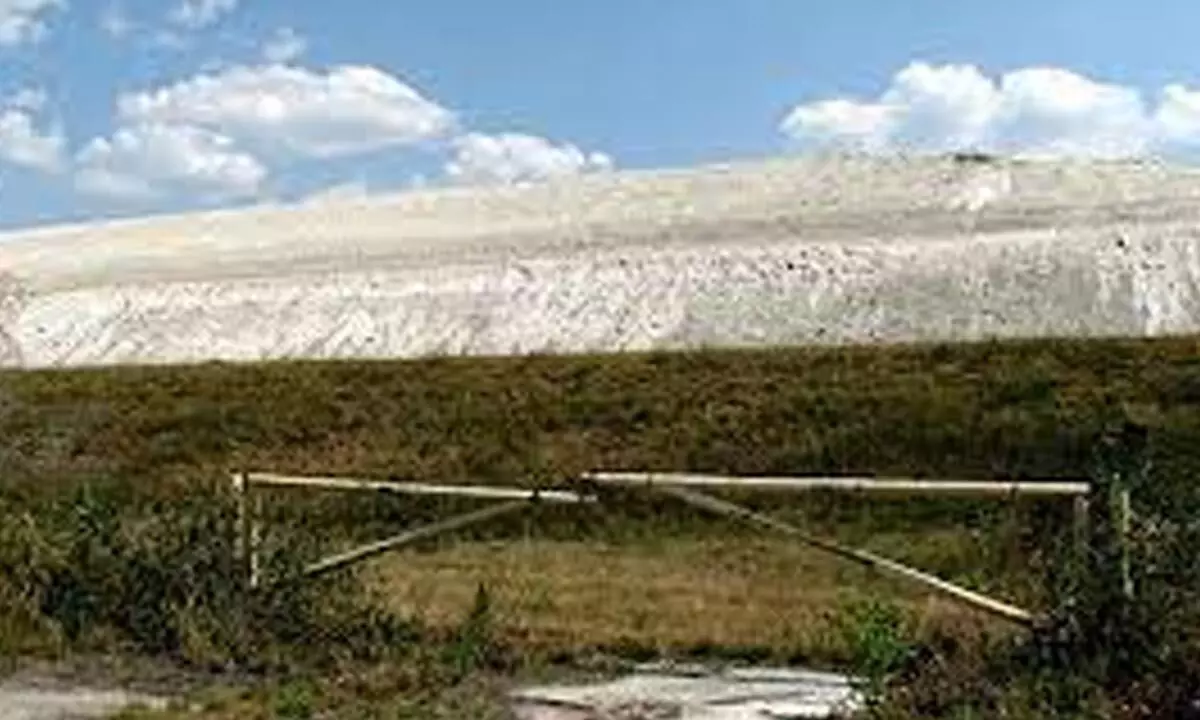Cement units can gain by dumping mineral gypsum for phosphogypsum
The cement industry plays a pivotal role in driving the circular economy in India through the use of industrial and municipal waste in cement manufacturing.
image for illustrative purpose

The cement industry plays a pivotal role in driving the circular economy in India through the use of industrial and municipal waste in cement manufacturing. Explaining why the cement industry is at the heart of the circular economy framework in India, experts point out that the use of large quantities of industrial and municipal waste in cement manufacturing helps to substantially reduce the burden on landfill as well as lower greenhouse gas (GHG) emissions from conventional waste disposal methods like incineration. Now the legacy stock of phosphogypsum, which is a waste product from manufacturing fertilizer, emits radon, a radioactive gas, (It also contains the radioactive elements uranium, thorium and radium) in India is estimated to be about 70 million metric tons (MMT). Given that the total cement production in India during FY23 was 400 MMT, the cement industry has the potential to use about 16 MMT of phosphogypsum annually. In a pioneering initiative, a large cement company has leveraged the inland and coastal waterways to transport phosphogypsum consignment, in order to address this issue of environmental challenges of its stockpile.
One must remember that reutilisation of phosphogypsum, which is otherwise disposed of as industrial waste, has been identified as a key part of the circular economy vision as enunciated by the Union Government. The Department for Promotion of Industry and Internal Trade (DPIIT) also focuses on gypsum reutilisation towards promoting circular economy in India.
Recently, a consignment of 57,000 metric tonne (MT) of phosphogypsum was transported in a bulk cargo carrier from Paradeep port in Odisha and reached the jetty of UltraTech Cement’s integrated cement unit, Gujarat Cement Works (GCW) located in Kovaya of Amreli district in Gujarat. The cement flagship company of Aditya Birla Group (ABG), is the country’s largest cement and ready-mix concrete (RMC) company. The company had sourced phosphogypsum from Indian Farmers Fertiliser Cooperative Limited (IFFCO) and Paradeep Phosphates Limited (PPL). Phosphogypsum is a by-product of phosphatic fertilizer plants. The phosphogypsum consignment of fertiliser industries in Odisha will be used in cement manufacturing at UltraTech’s integrated unit in Gujarat.
Experts are of the view that the move to transport phosphogypsum through inland and coastal waterways has demonstrated the use of ‘Multimodal Supply Chain’ as a cost-viable and safe transport option for other cement companies to replicate. The use of fertiliser industry by-product phosphogypsum in place of mineral gypsum as an alternative material in cement manufacturing will reduce dependence on mining of mineral gypsum in the country. This will also save precious forex for India as mineral gypsum is primarily imported. The move is expected to further strengthen the role of the cement sector in driving circular economy in India. With Ultratech taking the lead can the other cement companies be far behind?

